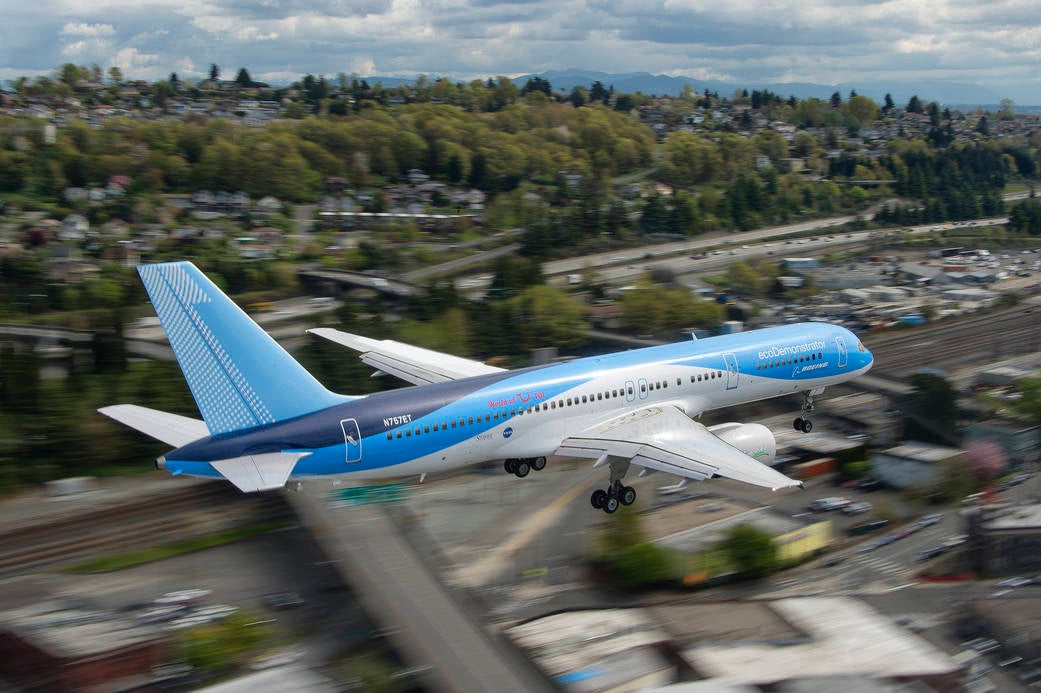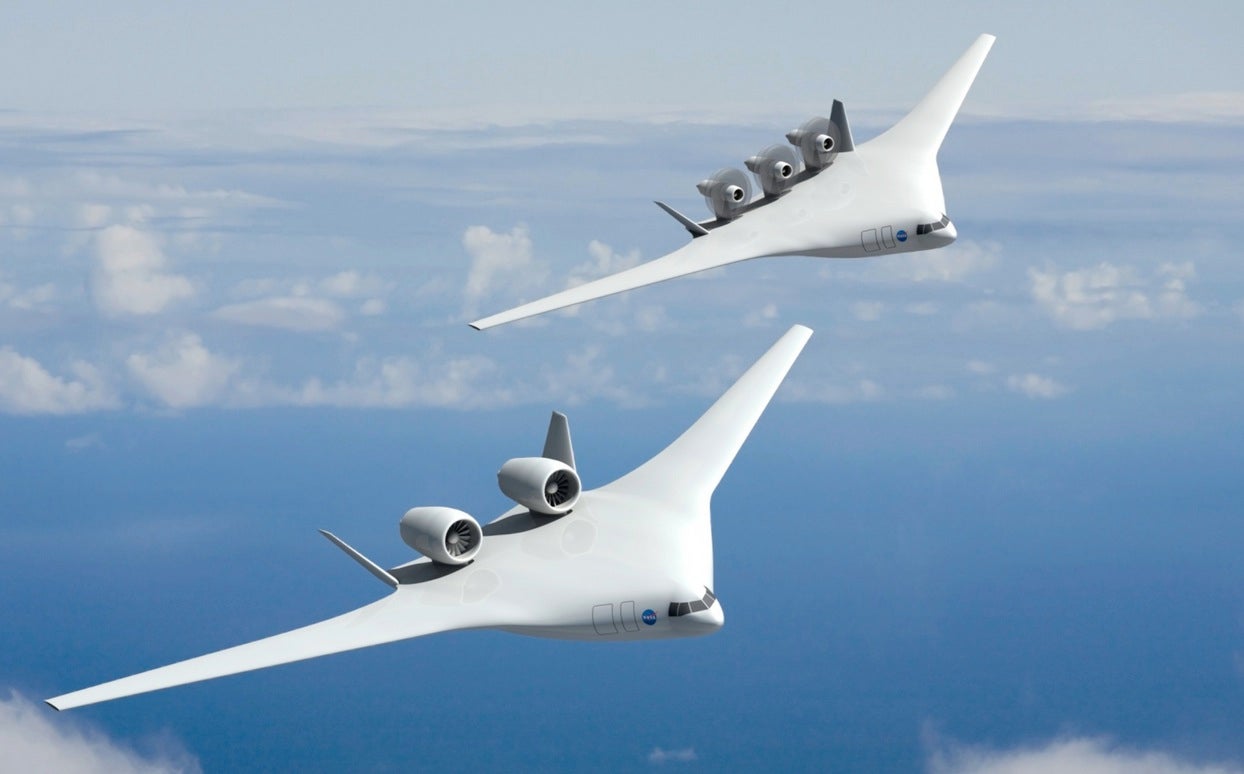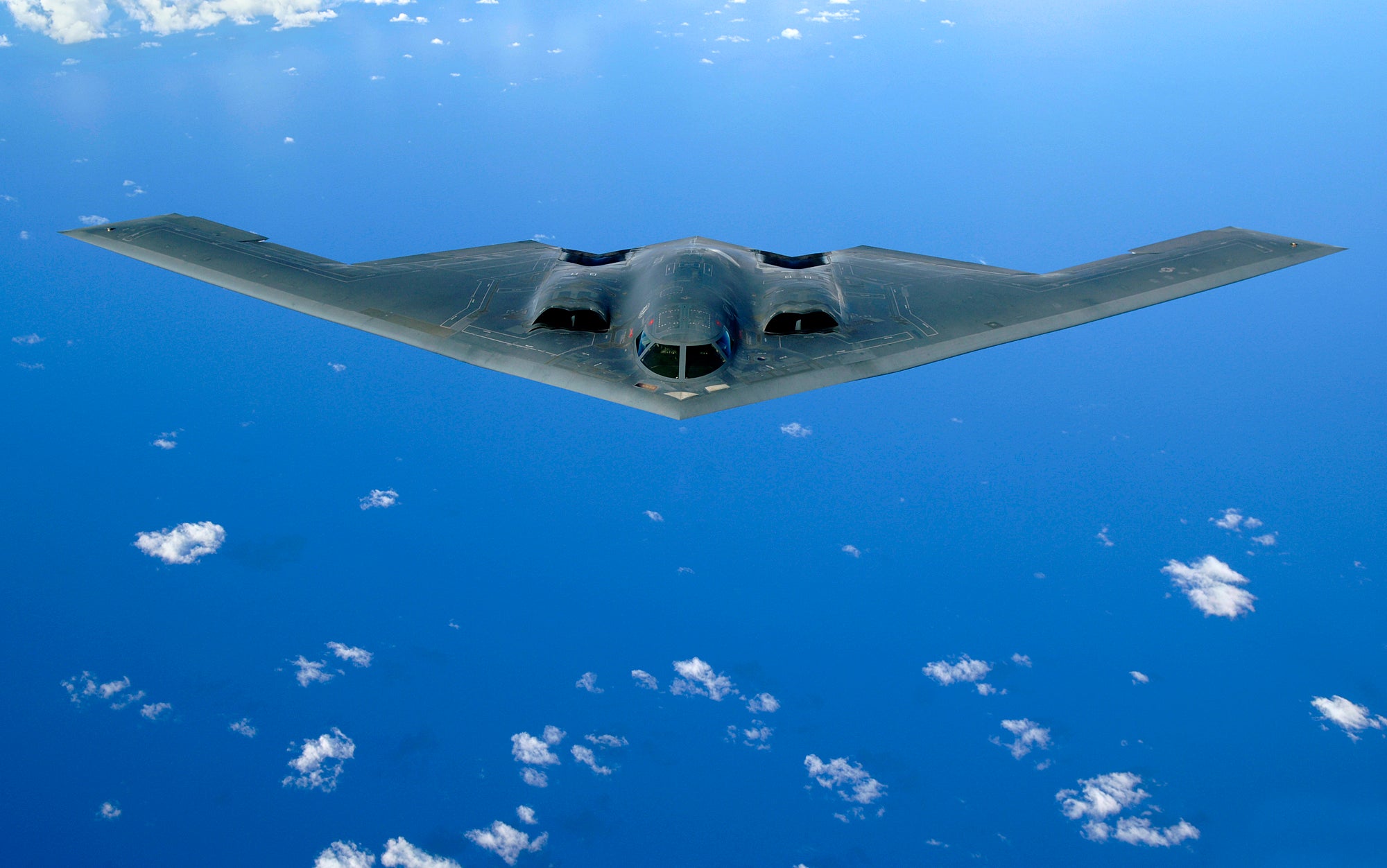 "ttyymmnn" (ttyymmnn)
"ttyymmnn" (ttyymmnn)
05/15/2015 at 15:32 ē Filed to: planelopnik
 5
5
 21
21
 "ttyymmnn" (ttyymmnn)
"ttyymmnn" (ttyymmnn)
05/15/2015 at 15:32 ē Filed to: planelopnik |  5 5
|  21 21 |

This fantastic photograph of a Boeing 757 was taken by a chase plane on final approach to King County Boeing Field in Seattle, Washington. The flight was part of the Active Flow Control Enhanced Vertical Tail Flight Experiment, described below.
For the Active Flow Control Enhanced Vertical Tail Flight Experiment on board the ecoDemonstrator 757, 31 tiny devices called sweeping jet actuators were installed on the aircraftís vertical tail to see what Ė if any Ė effect they have on the aerodynamics of the tail and rudder surfaces....
The possible future benefit of the active flow control work is that the technology could take over some of the work provided now by the tailís size. ďIf we can control the flow of air over the vertical tail on demand, we believe we can provide enough side force during take-off and landing that aircraft manufacturers can safely make the tail smaller,Ē said Mike Alexander, lead systems engineer for the flight tests at NASAís Langley Research Center in Hampton, Virginia. ďThe ability to reduce the size of the vertical tail would reduce weight and drag and decrease fuel consumption and emissions.Ē
Results from [wind tunnel] tests suggested future aircraft designers may be able to scale down the size of the vertical tail by about 17 percent and reduce fuel usage by as much as 0.5 percent, which quickly adds up to big savings.
Photo by John D. Parker via
!!!error: Indecipherable SUB-paragraph formatting!!!
 RallyWrench
> ttyymmnn
RallyWrench
> ttyymmnn
05/15/2015 at 15:45 |
|
Are these electrical devices? As long as the aircraft can be safely flown in the event of a system failure, why not?
 Mosqvich
> RallyWrench
Mosqvich
> RallyWrench
05/15/2015 at 15:50 |
|
Great question. Itís good to see NASA do some solid work on this.
 Jayhawk Jake
> RallyWrench
Jayhawk Jake
> RallyWrench
05/15/2015 at 16:07 |
|
Cost, complexity, reliability, FAA...
I need to research this more, it sounds promising. A 17% reduction in vertical tail size would be huge
 ttyymmnn
> RallyWrench
ttyymmnn
> RallyWrench
05/15/2015 at 16:30 |
|
I really donít know. But thatís a good question. I would guess that electrical redundancy is built in, so I donít think thatís a really big concern.
 ttyymmnn
> Jayhawk Jake
ttyymmnn
> Jayhawk Jake
05/15/2015 at 16:32 |
|
It
would
be huge. Also part of this program is researching new coatings that will reduce the amount of bugs that get stuck to the airplane. All of this is in the hopes of reducing fuel consumption. Itís fascinating to me to see just how much more there is yet to discover in the realm of aeronautics. Modern airplanes are remarkably efficient machines, but thereís always room for improvement. I think it would be an exciting time to be an aero engineer.
 Jayhawk Jake
> ttyymmnn
Jayhawk Jake
> ttyymmnn
05/15/2015 at 16:40 |
|
So I looked it up
Assuming this isnít some all new unique way of doing things, basically what you have is ports for bleed air to blow over the rudder at low speed, thereby improving controllability with a smaller vertical.
The point of it being that the vertical fin doesnít really do much beyond takeoff. The reason fins are so big is typically the Ďengine out on takeoffí condition: if you lose an engine at max thrust you need enough authority to counter all that yaw.
So the system pulls bleed air and jets it over the rudder. On these planes it wouldnít be too much additional complexity: I believe the horizontal leading edge is already bleed air heated for anti ice so thereís bleed air back there. Of course I donít know how flammable fluids are being treated in typical airliners, separation could be a problem (hydraulic actuators near hot air lines is not good)
Thereís other potential issues: do you have enough bleed air if one engine goes out? Chances of clogging the ports on the side of the tail?
From a cost perspective the bleed air system wouldnít be too bad, but making the little jet ports could get expensive.
It's an interesting idea, and the general idea has been done before in the form of blown wings for lift, but that was always military. I'll be curious to see if this makes its way into a production airplane
 Jayhawk Jake
> ttyymmnn
Jayhawk Jake
> ttyymmnn
05/15/2015 at 16:43 |
|
We've been in a phase for a while where most of the advancements in aerospace are small. We are far from the days when we went from a suborbital rocket to landing on the moon in a decade. Lots of little improvements are happening, and a good portion of them are things that we already knew but could never do, like advanced control systems or complex CFD. Airplanes are leaner and more refined than ever before thanks to powerful computers running CFD and FEM, and as additive manufacturing grows things could get really exciting
 ttyymmnn
> Jayhawk Jake
ttyymmnn
> Jayhawk Jake
05/15/2015 at 16:45 |
|
So where will the next great leap come?
 ttyymmnn
> Jayhawk Jake
ttyymmnn
> Jayhawk Jake
05/15/2015 at 16:46 |
|
Interesting. Thanks for the info!
 RallyWrench
> Jayhawk Jake
RallyWrench
> Jayhawk Jake
05/15/2015 at 16:51 |
|
Sounds like F1ís wing-stalling DRS, in aircraft form. Makes sense now.
 Jayhawk Jake
> ttyymmnn
Jayhawk Jake
> ttyymmnn
05/15/2015 at 16:53 |
|
Thatís just it though: I donít think there will be a great leap, not unless Lockheeds cold fusion reactor pans out.
Itís going to be lots of little things. Additive manufacturing for turbines will make engines smaller, lighter, and more efficient. It could also be used to make airplane parts more structurally efficient, and help to reduce part counts and labor costs for assembly. Next Gen air traffic should help efficiency and let planes get smaller.
It's really hard to pinpoint one thing, and you always have to keep in mind that development takes a long time and certification with radical new technology is difficult
 Jayhawk Jake
> RallyWrench
Jayhawk Jake
> RallyWrench
05/15/2015 at 16:54 |
|
Not really. Itís more akin to fan cars that suck the car down actively.
 ttyymmnn
> Jayhawk Jake
ttyymmnn
> Jayhawk Jake
05/15/2015 at 16:56 |
|

Thatís why I have remained skeptical about this design thatís been floating around for a few years now. Sure, it would probably make a fantastic airplane, but just imagine the ridiculously high costs of changing the airport infrastructure the world over? I think airliners will remain long tubes simply because of all the jetways that are in use. And passengers like windows.
 RallyWrench
> Jayhawk Jake
RallyWrench
> Jayhawk Jake
05/15/2015 at 17:05 |
|
Ah, ok. As in, mimicking a larger wing surface area without a drag penalty? Do existing bleed air systems use engine driven pumps? Excuse my ignorance, Iím fascinated by aviation technology but donít really know a damn thing about it.
 Jayhawk Jake
> RallyWrench
Jayhawk Jake
> RallyWrench
05/15/2015 at 20:14 |
|
Youve almost got it, but youíre mixing up different parts of the system.
The sweeping jet actuators blow air across the rudder to make it more effective. Essentially that mimics having a larger surface. The drag reduction comes later: by having a smaller tail, thereís less drag at cruise. Even just reducing the surface area makes a big difference.
The second part of your question is kinda funny. Bleed air is just air pulled from the engine, from the compressor. There arenít pumps, itís high pressure air (and itís pretty damn hot too!). Bleed air does a lot of things. Some of it goes to wing and tail leading edges to heat them and prevent icing, some is used to pressurize the cabin, some runs pneumatic systems.
The issue with bleed air is it lowers the efficiency of the engine. Youíre sacrificing air that would otherwise be used for power. So adding another bleed air driven system hurts the efficiency a bit, but in this case it only uses it on takeoff, where a lot of the time the engine power is de-rated anyways.
This stuff is fascinating, which is why I got a degree in aerospace engineering :P
 BaconSandwich is tasty.
> ttyymmnn
BaconSandwich is tasty.
> ttyymmnn
05/15/2015 at 20:20 |
|
No tail you say?

 ttyymmnn
> BaconSandwich is tasty.
ttyymmnn
> BaconSandwich is tasty.
05/15/2015 at 20:33 |
|
Well, I didnít say NO tail. That only carries two passengers. But a whole lot of ĎMurica.
 RallyWrench
> Jayhawk Jake
RallyWrench
> Jayhawk Jake
05/15/2015 at 20:35 |
|
Thanks for the education. Try as I might, I never had the math ability to make it into ME for automotive engineering, but I havenít lost the interest in things like this.
 BaconSandwich is tasty.
> ttyymmnn
BaconSandwich is tasty.
> ttyymmnn
05/15/2015 at 22:26 |
|
1. Load passengers in bomb racks.
2. Profit.
 ttyymmnn
> BaconSandwich is tasty.
ttyymmnn
> BaconSandwich is tasty.
05/15/2015 at 22:49 |
|
Give Ďem parachutes and you donít even have to land.
 Rusty Vandura - www.tinyurl.com/keepoppo
> ttyymmnn
Rusty Vandura - www.tinyurl.com/keepoppo
> ttyymmnn
05/16/2015 at 08:17 |
|
Can also drop Murican stuff.